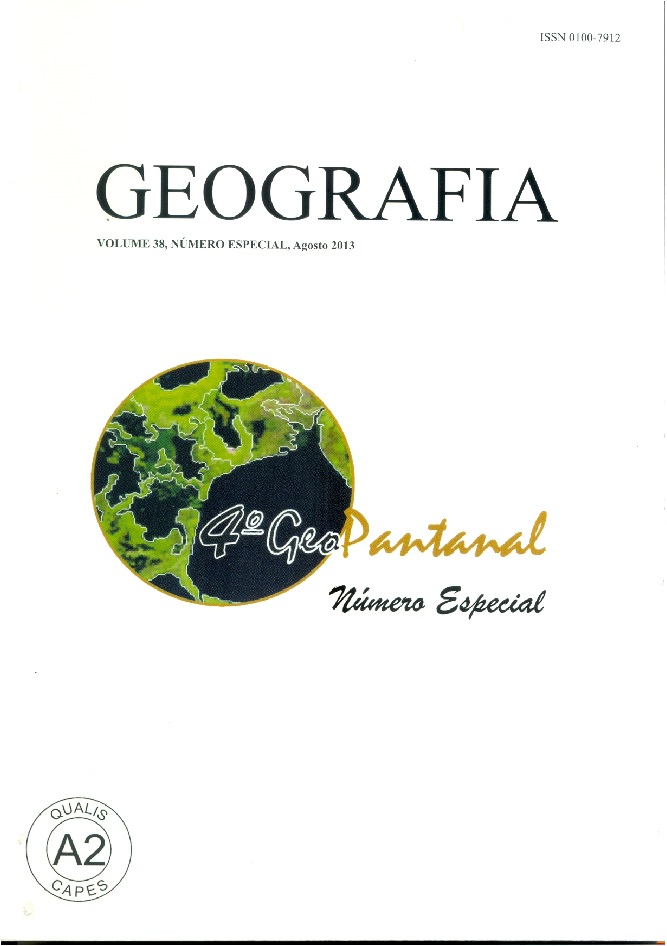THE NEGROS FAN AND ITS PALEOENVIRONMENTAL CHANGES IN THE QUATERNARY, SOUTHEAST EDGE OF PANTANAL MATO-GROSSENSE (BRAZIL)
Abstract
The Negro river megafan is an expressive geomorphological feature in the Southeast edge of the Pantanal (MS) Basin. . It is characterised by depositional systems and sedimentary dynamics of complex evolution reflected in the composition of the vegetation cover. After the formation of the oldest lobe, an avulsion in the main channel took place, which began to flow to the southeast, originating the pre-current lobe at the distal portion of the system (Neo-pleistocene age) and in the Holcene the current lobe was formed. The methodological procedures were based on interpretation of satellite images, topographic maps, SRTM radar images, thematic maps, and field data. The neotectonic features were identified based on drainage and relief anomalies and the depositional system on the old, pre-current and current lobes, which are registered in its surface considering the standard of distributary drainage and indications of avulsion, showing neotectonic events in the Quaternary. The process of fluvial abandonment is registered in the pre-current lobe, by paleodrainage of NE-SW direction and by the vegetation cover along its course, around 50 km. This paleodrainage is marked in the landscape as a large ebb called Santa ClaraDownloads
Published
Issue
Section
License
The authors maintain the copyright and grant GEOGRAFIA the right of first publication, with the articles simultaneously licensed under the Creative Commons BY 4.0 License, which allows sharing and adapting the articles for any purpose, as long as appropriate credits and provisions of image rights, privacy or moral rights. Other legal attributions can be accessed at: https://creativecommons.org/licenses/by/4.0/legalcode.en.
Geography, Rio Claro, SP, Brazil - eISSN 1983-8700 is licensed under the Creative Commons BY 4.0 License.





